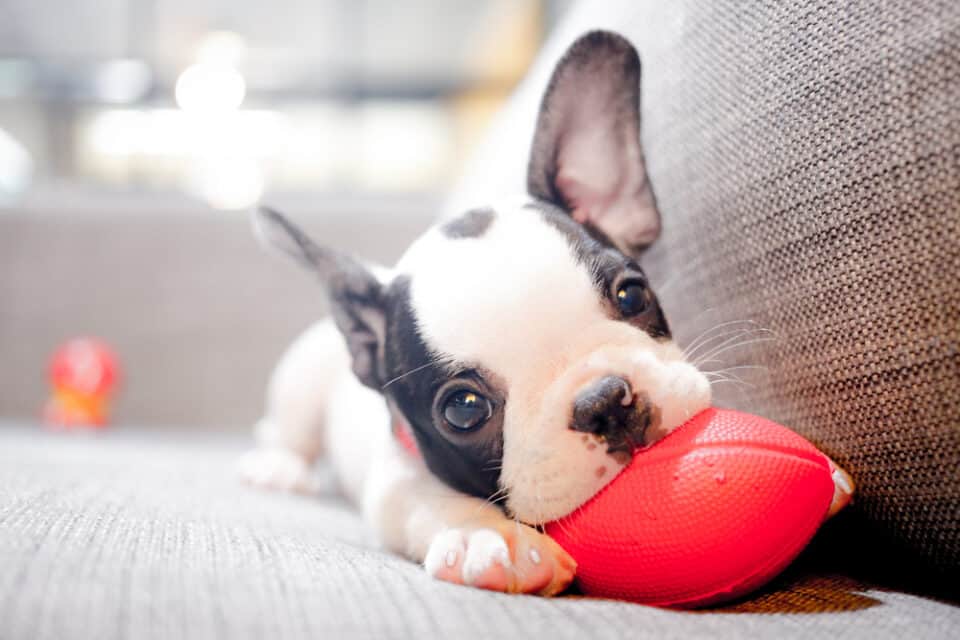Contents
All products and services on Project PAWS are independently selected by our editors, contributors, and veterinary experts. This post contains affiliate links. As an Amazon Associate I earn from qualifying purchases.To learn more, view my disclosure policy.
Last Updated on October 29, 2020 by Aimee
A Guide To Navigating The First Six Months With Your New Puppy: It can be so exciting to bring a puppy home, as your home is filled with so much entertainment and joy. The weeks watching your puppy learn new things, play, and grow can be mesmerizing and full of new adventures. It’s easy to get caught up in the excitement and play and forget about other necessary things that your puppy needs as they are developing and growing. We will discuss some of these things in this article, focusing on what your puppy will need during their first six months with you.
Veterinary Visits & Vaccines
Once you have brought your new puppy into your home, even if they have already received some vaccines (shots) from the person you got them from, it is extremely important to schedule an initial puppy visit with a veterinarian. This is so your puppy can get a good exam and check-up done to make sure they are healthy and to address any concerns or questions you may have about your new puppy directly with their doctor.
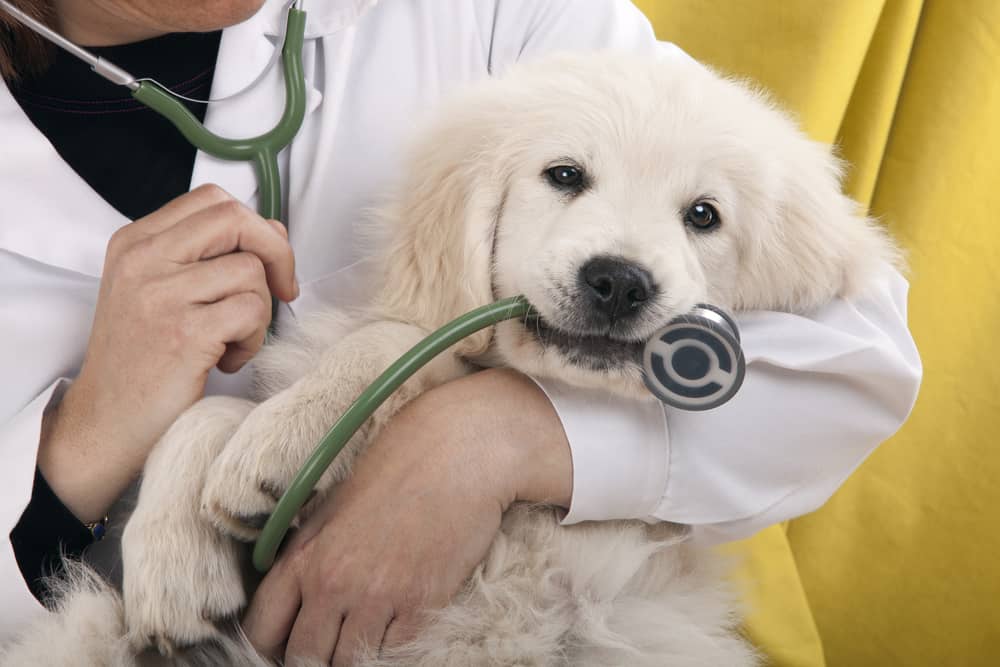
At this initial veterinary visit, their stool will be checked for parasites, such as roundworms, hookworms, and giardia. It is very common for puppies to have intestinal parasites, as they can easily get these from their mother. If any intestinal parasites are identified, your puppy will be given a de-wormer to make sure they are cleared from your puppy’s system.
Your puppy will also need to be given all of their rounds of puppy shots to make sure they are protected from certain contagious diseases, such as parvovirus. Parvovirus can be deadly to puppies and it is very easy for a puppy to get infected by it, even if they aren’t in direct contact with other dogs. The best way to prevent it is to make sure your puppy receives all of their puppy shots at the right time interval.
A typical vaccine schedule for a puppy may look like the following:
6-8 weeks of age:
first parvovirus/distemper vaccine
10-12 weeks of age:
second parvovirus/distemper vaccine
bordatella/parainfluenza virus vaccine (kennel cough)
14-16 weeks of age:
third parvovirus/distemper vaccine
first leptospirosis vaccine
rabies vaccine
18-20 weeks of age:
second leptospirosis vaccine
Flea and & Parasite Prevention
Depending on the time of year, your puppy may have picked up some fleas. You’ll need to get them started on monthly flea prevention, and if they currently have fleas, give them a good bath to try to cleanse the fleas off of them. Your veterinarian is the best place to get the best new flea prevention medication, as some of the older ones just don’t work that well anymore. Flea prevention comes in either chewable tablets you give by mouth or spot-on applications that you apply directly to your puppy’s skin. If it is the spring, summer, or fall, continue to give your puppy flea prevention each month so they don’t continue to get re-infested with fleas, as too many fleas on young puppies can make them anemic from the fleas feeding off of their blood.
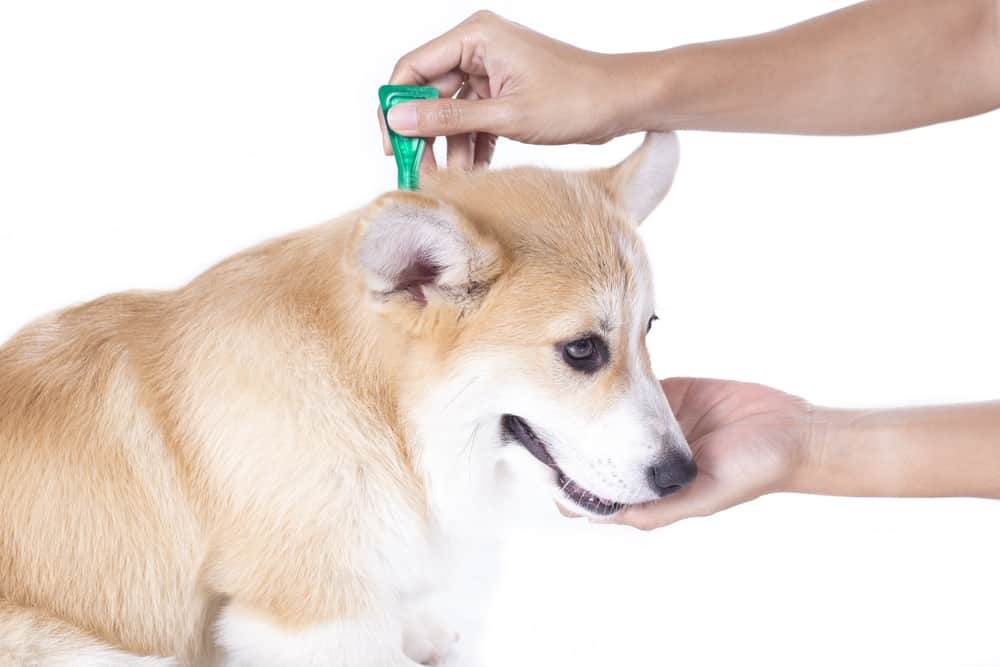
You will also need to start your puppy on monthly heartworm prevention, especially if you live in an area where heartworm disease is endemic, such as the Southern and Midwestern states of the United States. Heartworm prevention, just like flea prevention, is also given as either a chewable oral tablet or a topical application. In fact, there are a couple of combination products that prevent fleas and heartworms at the same time that could be given- check with your veterinarian for these products if that interests you.
Starting heartworm prevention at a young age and continuing to give it every single month is the best way to prevent your puppy from getting heartworms. Most heartworm prevention products also treat for common intestinal parasites your puppy may pick up along the way during their many new explorations around your house and neighborhood, such as roundworms and hookworms.
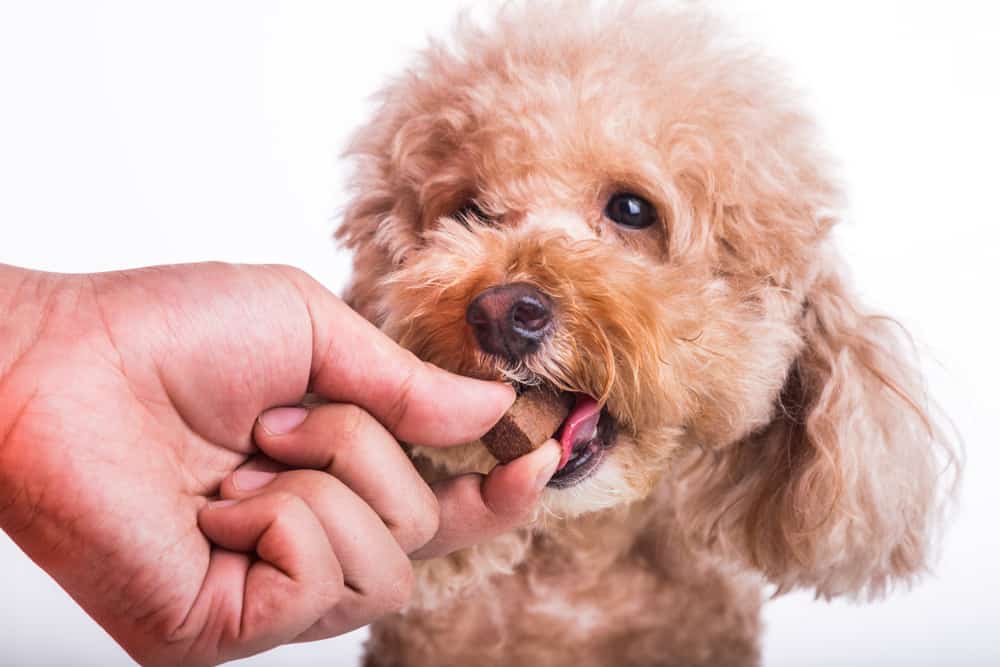
Nutrition
Your puppy probably loves to eat and gets excited at feeding time. If you have other pets in the home, your puppy may even want to chow down on their own food and then try to grab a bite of the older dog’s food or even the cat’s food. This is perfectly fine, as long as your puppy is mostly eating their own puppy food. For small and medium breed puppies, regular puppy food (dry kibble is fine, no need for moist or wet food) is perfect for them and can be fed to them until they are about eight to ten month of age.
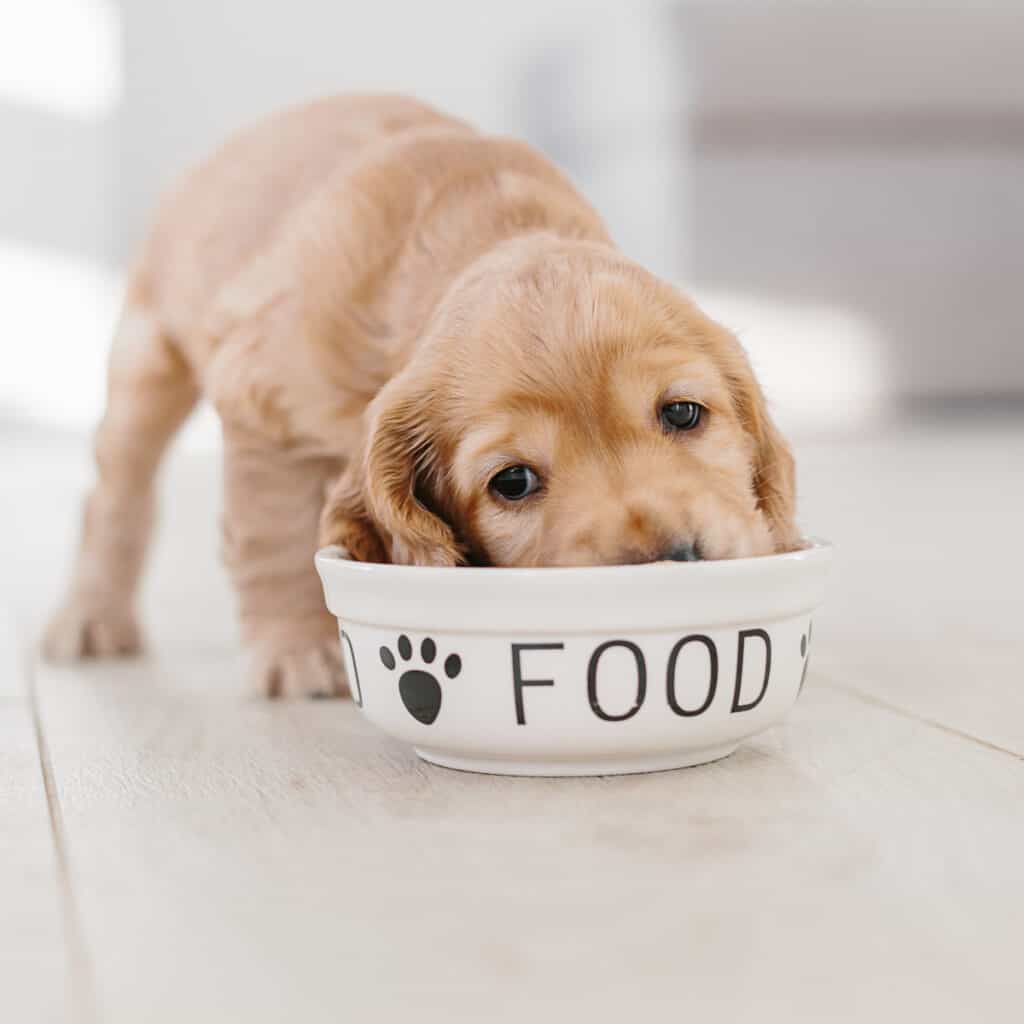
If you have a large or giant breed puppy, they need to be fed puppy food that is specific to “large breed puppies”. You should be able to identify this language on the front of the bag of food. Feeding them regular puppy food may make them more susceptible to developmental bone and joint abnormalities, as it could make them grow too fast. It is always good to take a picture of the bag of food to show to your veterinarian so they can make sure your puppy is on the best food for them and being fed the correct amount daily.
Puppy Behavior Classes & Training
Begin trying to train your puppy right away! This is the perfect time for learning and being exposed to all sorts of people and situations in controlled environments. Doing this can help them feel confident and be comfortable with change and new settings, in order to decrease the risk they may develop fears or anxieties as they get older. Signing them up for puppy classes is a perfect way to help with socialization and learning basic obedience skills.
Of course, make sure they are getting all of their necessary puppy shots before taking them to places with other puppies, or at least make sure where they are going requires all the puppies to be vaccinated.
Other things you can do in addition to basic training are getting your puppy used to and comfortable with you touching and holding their feet, and opening their mouth and brushing their teeth. This can help when it is time to trim their toenails in the future, while brushing their teeth regularly can help set them up for a lifetime of a healthy mouth.
Spaying & Neutering
Spay is the term used to describe removing the female puppy’s reproductive organs, while neuter is the term used to describe removing the male puppy’s reproductive organs.
Healthy puppies can be spayed and neutered any time after they are three to four months old, but typical recommendations for small and medium sized breeds are to spay and neuter between four to six months of age. This will ensure they are spayed and neutered prior to reaching sexual maturity and being able to reproduce. Spaying and neutering prior to reaching sexual maturity can also help prevent certain behaviors from developing such as urine marking in the house. Spaying a female puppy prior to her first heat cycle also drastically reduces the risk of her developing mammary cancer later in life.
That being said, newer recommendations for large and giant breed puppies is to wait until they are at least one to two years of age before spaying or neutering them. There is some evidence to suggest this can help prevent them from developing bone and joint abnormalities, as well as decrease the chances they will develop certain types of cancers later in life. If you have any concerns or aren’t sure when is the right time to spay or neuter your puppy, check with your veterinarian and they will help provide more specific advice as to what is the best time for your individual puppy.
Getting a new puppy is an exciting adventure. Making sure they are receiving all the things they need to be healthy physically and mentally as they grow into an adult dog can also be fun to navigate and be a part of!
Edited by Aimee Stock

